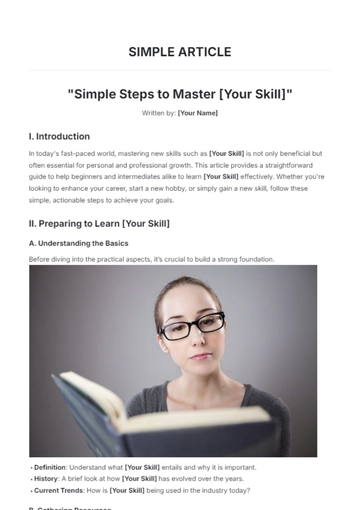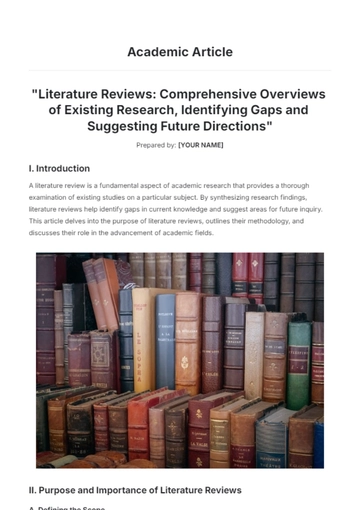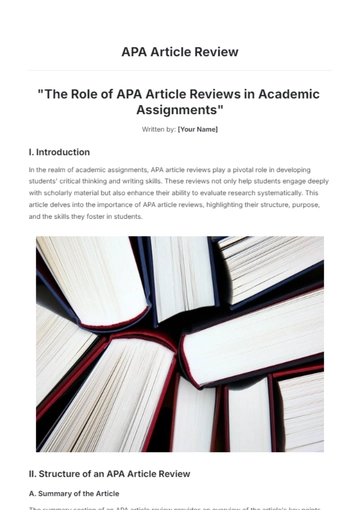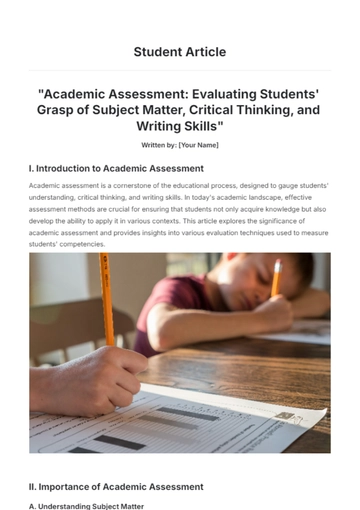Free Journal Article Reference

Reference: An Essential Academic Tool
Written By: [Your Name]
Introduction
In the world of academia and research, references play a critical role in the communication of knowledge. They serve as the foundation of scholarly work, allowing researchers to build on previous studies, acknowledge the contributions of others, and validate their arguments. Proper referencing not only strengthens the credibility of a work but also helps prevent plagiarism, promoting intellectual honesty. This article explores the importance of references, different referencing styles, common mistakes in referencing, and their broader impact on academic and research communities.
The Importance of References in Academic Writing
References are essential in academic writing for several reasons. First, they lend credibility to the writer's argument by showcasing reliance on established sources. Citations of previous studies, theories, or frameworks demonstrate that the work is grounded in existing knowledge. This helps establish trust between the author and the reader, who can check the validity of the cited sources.
Second, references foster academic integrity. By properly attributing ideas, data, and theories to their original creators, researchers avoid plagiarism, which is a serious academic offense. Acknowledging other scholars’ contributions ensures that intellectual property rights are respected, thus maintaining the ethical standards of research.
Third, referencing provides a road map for readers who wish to further explore the topic. It enables readers to trace the evolution of knowledge in a particular area by consulting the sources cited. This facilitates continued research and discussion, contributing to the advancement of the field.
Finally, references encourage transparency. When authors document where their data or theories come from, it becomes easier to scrutinize the methodology or challenge the conclusions of the research. This openness allows for constructive criticism and peer review, which are key elements in refining academic knowledge.
Common Referencing Styles and Their Applications
There are numerous referencing styles used in academia, each with its own rules and guidelines. The choice of a referencing style depends on the discipline, journal requirements, or institutional guidelines. Below are some of the most widely used referencing systems:
1. APA (American Psychological Association) Style
APA is one of the most common referencing styles, particularly in the fields of social sciences, psychology, education, and business. This style emphasizes the author-date format, where the author’s name and the year of publication are mentioned within the text (in-text citations), and a detailed reference list is included at the end of the paper.
Example of an in-text citation: (Smith, 2020)
Reference list example: Smith, J. (2020). Research Methods in Psychology. New York: Academic Press.
2. MLA (Modern Language Association) Style
MLA is frequently used in the humanities, especially in literature, philosophy, and the arts. It employs a simpler author-page format for in-text citations, focusing on the author's name and the page number from where the information is taken.
Example of an in-text citation: (Doe 45)
Reference list example: Doe, John. The Art of Writing. Cambridge University Press, 2019.
3. Chicago Manual of Style
The Chicago style is versatile and can be used across a range of disciplines. It offers two systems: the Notes and Bibliography style, typically used in the humanities, and the Author-Date system, similar to APA, used in the sciences.
Example of a note citation:
John Doe, Historical Perspectives (Chicago: University of Chicago Press, 2020), 23.
Reference list example: Doe, John. Historical Perspectives. Chicago: University of Chicago Press, 2020.
4. Harvard Referencing Style
Harvard referencing is used widely in various fields, especially in the natural and social sciences. It also follows the author-date format but is distinct in the layout of references in the bibliography.
Example of an in-text citation: (Smith, 2021)
Reference list example: Smith, J., 2021. Introduction to Chemistry. Oxford University Press, Oxford.
5. Vancouver Style
Used mainly in the medical and biological sciences, Vancouver is a numerical referencing style. In-text citations are indicated by numbers corresponding to a numbered reference list at the end of the document.
Example of an in-text citation: [1]
Reference list example:
Smith J. Introduction to Clinical Research. 3rd ed. London: Medical Press; 2018.
Common Referencing Mistakes and How to Avoid Them
Despite the widespread understanding of the importance of references, many writers still make mistakes in citing sources. These errors can have significant consequences, from undermining the credibility of the work to causing issues with academic integrity. Some of the most common referencing mistakes include:
1. Inconsistent Referencing Style
One of the most frequent mistakes is the inconsistent use of a referencing style. Writers often mix different citation styles within the same document, which can confuse readers and reflect poorly on the author’s attention to detail. To avoid this, writers should choose a referencing style at the outset and adhere strictly to its rules throughout the document.
2. Incorrect Formatting of Citations
Each referencing style has specific rules regarding how to format citations, from the order of the author’s name to punctuation. Incorrect formatting, such as placing the year before the author’s name in APA, can detract from the professionalism of the work. Writers should familiarize themselves with the detailed requirements of their chosen style or use referencing software to ensure accuracy.
3. Failure to Include All Relevant Details
Sometimes, citations lack essential information, such as the publication year, volume number, or page range. This can make it difficult for readers to locate the source. Authors should double-check that all required details are included in every reference.
4. Over-reliance on Secondary Sources
Citing secondary sources (a reference cited within another reference) is acceptable in limited cases, but over-reliance on such sources can weaken the academic rigor of a work. Whenever possible, authors should consult and cite primary sources directly to ensure that the information is accurate and relevant.
5. Plagiarism
Plagiarism can occur even when references are used, especially when the author fails to properly attribute the source of ideas or quotes. It is crucial to distinguish between paraphrasing and quoting directly and to give appropriate credit in both cases. Using plagiarism-detection software can help authors identify unintentional plagiarism before submitting their work.
The Broader Impact of Referencing on Research and Academia
References do more than just serve the technical requirements of a research paper; they play a crucial role in the development of knowledge. By tracing the intellectual lineage of ideas, references connect different scholars across time and space, creating an interwoven network of academic discourse. This cumulative process is vital to the progression of disciplines.
1. Knowledge Validation
References allow scholars to build on previous research, validating their arguments with evidence and theoretical frameworks from recognized sources. This process of validation is central to the scientific method and academic discourse, as it allows for the verification of results and claims.
2. Fostering Collaboration
By citing each other’s work, researchers across different fields and institutions contribute to a collaborative environment. This practice facilitates cross-disciplinary insights and encourages cooperation among researchers who may have complementary expertise. Ultimately, references are the glue that holds together the diverse efforts of the academic community.
3. Influencing Impact and Recognition
Academic recognition and impact are, in part, determined by how often a researcher’s work is cited by others. A well-cited article can enhance the reputation of the author, increase the visibility of the research, and contribute to future funding or publication opportunities. Hence, referencing serves as a tool not only for scholarly communication but also for professional advancement.
4. Encouraging Ethical Scholarship
References reinforce the ethical standards of academia by ensuring that researchers credit the originators of ideas, data, and theories. This fosters a culture of honesty and integrity within the academic world, where ideas are shared and built upon openly, yet appropriately acknowledged.
Conclusion
References are an indispensable element of academic and research work, underpinning the credibility, integrity, and transparency of scholarly writing. By adhering to established referencing styles, avoiding common mistakes, and appreciating the broader role of references in the academic community, researchers can contribute effectively to their fields. Beyond technical requirements, references promote collaboration, validation, and ethical behavior, ensuring that knowledge continues to evolve responsibly and rigorously. Properly referencing sources is not merely a task of fulfilling academic conventions—it is a practice that sustains the integrity of scholarship itself.
- 100% Customizable, free editor
- Access 1 Million+ Templates, photo’s & graphics
- Download or share as a template
- Click and replace photos, graphics, text, backgrounds
- Resize, crop, AI write & more
- Access advanced editor
Create accurate citations with Template.net’s Journal Article Reference Template. This editable and customizable template ensures the proper structuring of references for journal articles. Editable in our AI Editor Tool, it’s ideal for writers and researchers needing organized, correctly formatted citations. Customize the template to suit your citation style, ensuring clear, professional references for your academic or professional articles.





























